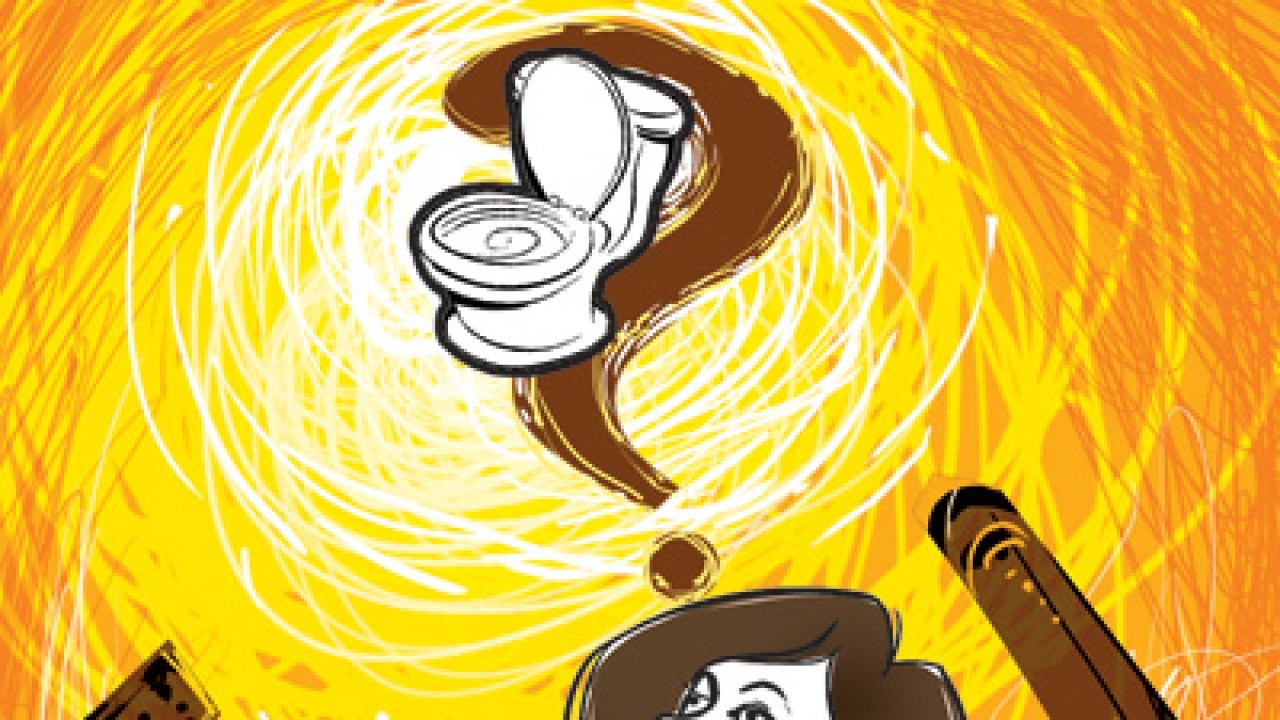
During a recent convention hosted by the University of Chicago in Delhi, Richard Thaler (co-author of Nudge) spoke about how he sees the sanitation problem as one that is behavioural. He felt that the problem was much harder than he had imagined - "A problem for which there is no TED Talk”. Most conferences on sanitation seem to start with a lot of hope but often end in despair. While some organisations and experts are unfazed, many are left wondering if the challenges can ever be overcome. This conference didn’t end in despair though.
If we look at sanitation efforts in the country in their various avatars - Total Sanitation Campaign, Nirmal Bharat Abhiyan and now Swachh Bharat Abhiyan, they all have singular focus on toilet construction which looks achievable. Although fraught with a lot of challenges, it seemed like a manageable problem. For starters, we could measure it.
We then started learning that supply isn’t going to solve the problem. Enough has been written on the usage problem. Then came the study by Thomas Clasen et al, published in Lancet, that showed that even if we build toilets and drive usage, we cannot assume improved health outcomes. The hypotheses being, not washing hands with soap and not handling food safely leads to diarrhoea. The biggest cause for poor outcomes could be the lack of safe water.
Then comes the issue of safe disposal of faecal matter. There is no system currently and all the accumulated faecal matter could contaminate water and further compound the problem. Culture, caste, class aspects further compound the problem. Many of these are intangible from a measurement point of view. We can measure the number of toilets constructed, but how do we measure usage and hand wash behaviour?
Urban sanitation is another story. Lack of space, negative predisposition towards community toilets, trash, garbage, cleanliness of streets and public spaces - suddenly the problem looks too complex. A free toilet isn’t a silver bullet, it isn’t even a lead bullet.
From being very myopic about the problem, we have gone to the other end of the spectrum. If you look at the sanitation problem in its entire complexity and scale, it is natural to feel weighed down and be overcome by the feeling of despair. It just feels like too much to do.
So, what can we do to remain in the hope zone?
1. The problem at the national level seems like a huge monster. Whenever we talk of scale, thanks to our population, the scale of the problem scares us. Maybe we should redefine scale to the state, and not national level. The situation in each state could be different and in the spirit of cooperative federalism, it is prudent for states to address it. The Central government sets the momentum, provides financial and technical assistance. For starters, plan more conventions at the state, not national level.
2. Get a systematic understanding of the problem. We are focussed on the end user, but we should equally focus on the system, its various stakeholders, their motivations, barriers, gaps and address those. Else, scale will elude us.
3. Instead of adopting a one-size-fits-all approach, we can do a segmentation exercise and target interventions and communication at these segments. Currently, we have men, women and children as three broad segments. There is scope for a more nuanced segmentation
4. Measurement: We need to evolve metrics beyond construction. This is not easy and requires us to be more imaginative. We need to look at technology and mobiles to find ways to measure surrogates. However inefficient, we must start tracking and reporting this. Even if it is a study of people’s perception of parameters like open defecation and cleanliness.
5. Rapid, large scale testing: We do not have enough studies on usage and adjacent behaviours. What works, what doesn’t. How effective is the current communication ? Millions are being spent on communication, both on TV and on ground. How do we know if this is making an impact? We need to set up large scale experiments and impact evaluation studies. There are lot of voices complaining about low budgetary allocations for Information, Education and Communication activities. For starters, utilisation of these budgets is poor, the capacity of the system to create impact is weak.
Questions like where to start? What is the actual problem? are quite common among people taking interest in this problem. I'm sure many experts have similar questions. A useful framework is wicked problems theory (coined by Prof. Horst Rittel). Sanitation is a classic wicked problem which doesn’t have a defined starting point, nor does it have stopping rules. So, start somewhere. You don’t know the problem till you have the solution, so develop a lot of solutions. Solutions as per the wicked problem theory can’t be seen from a frame of right and wrong, but with a frame of good and bad. Needless to say, every wicked problem is unique, therefore, we struggle when we import solutions from other domains. Accept that this is a unique problem.
Some problems will get worse before they get better, like road safety in India. The sanitation problem on the other hand, seems like it has already hit rock bottom and is getting better. The sanitation crisis warrants that we become over optimistic about it, else we will give up. Sure, we must respect the problem, but it cannot morph into fear.